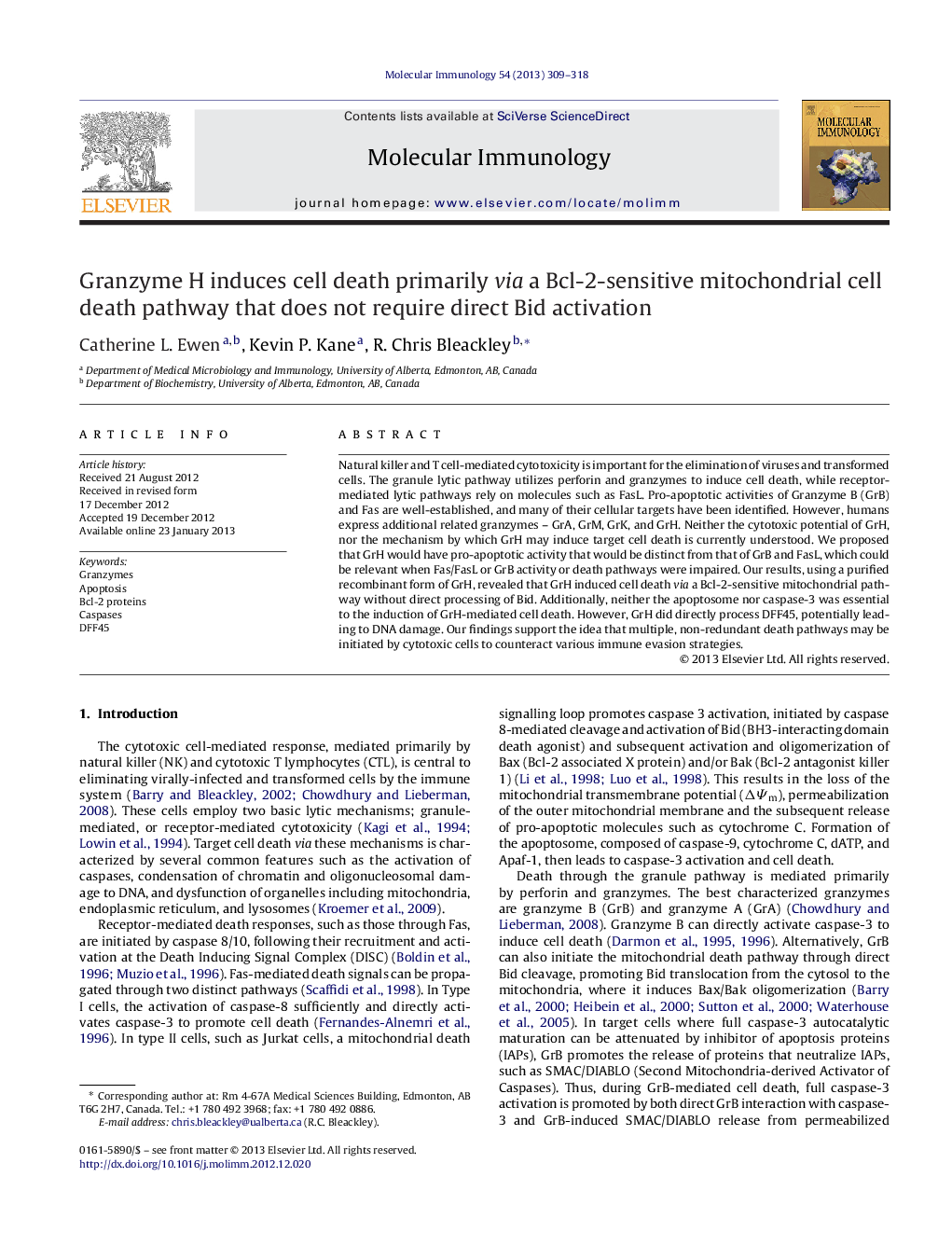| Article ID | Journal | Published Year | Pages | File Type |
|---|---|---|---|---|
| 2831185 | Molecular Immunology | 2013 | 10 Pages |
Natural killer and T cell-mediated cytotoxicity is important for the elimination of viruses and transformed cells. The granule lytic pathway utilizes perforin and granzymes to induce cell death, while receptor-mediated lytic pathways rely on molecules such as FasL. Pro-apoptotic activities of Granzyme B (GrB) and Fas are well-established, and many of their cellular targets have been identified. However, humans express additional related granzymes – GrA, GrM, GrK, and GrH. Neither the cytotoxic potential of GrH, nor the mechanism by which GrH may induce target cell death is currently understood. We proposed that GrH would have pro-apoptotic activity that would be distinct from that of GrB and FasL, which could be relevant when Fas/FasL or GrB activity or death pathways were impaired. Our results, using a purified recombinant form of GrH, revealed that GrH induced cell death via a Bcl-2-sensitive mitochondrial pathway without direct processing of Bid. Additionally, neither the apoptosome nor caspase-3 was essential to the induction of GrH-mediated cell death. However, GrH did directly process DFF45, potentially leading to DNA damage. Our findings support the idea that multiple, non-redundant death pathways may be initiated by cytotoxic cells to counteract various immune evasion strategies.
► The study brings clarity to the mechanism of Granzyme H-induced cell death. ► The mechanism is a Bcl-2 sensitive death pathway, but is not initiated by direct Bid cleavage. ► Granzyme H cleaves DFF45, leading to DNA damage. ► Granzyme H activates caspases in some cell lines, but they are not required for death. ► Granzyme H utilizes a different death mechanism than Granzyme B and Fas.
